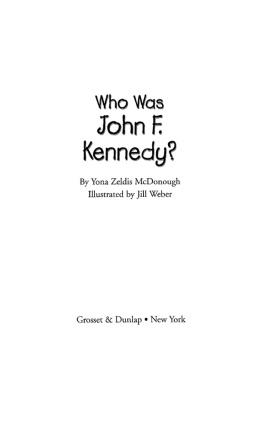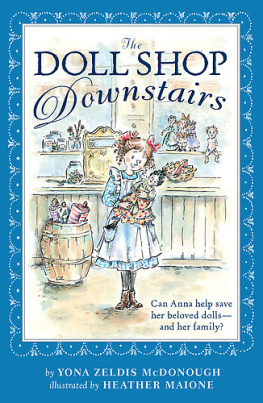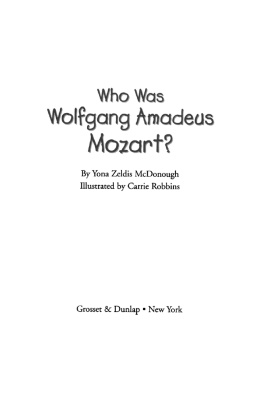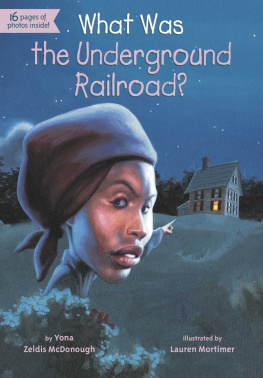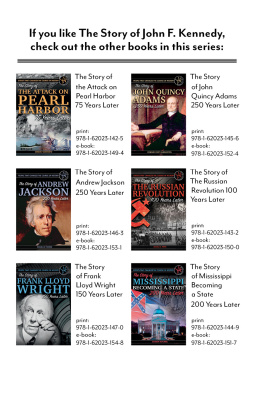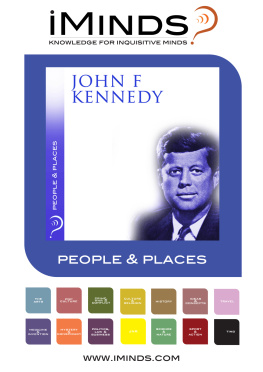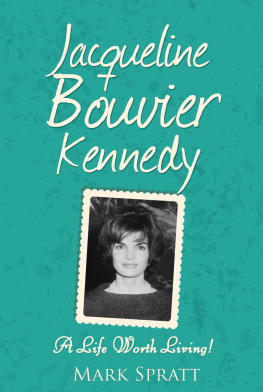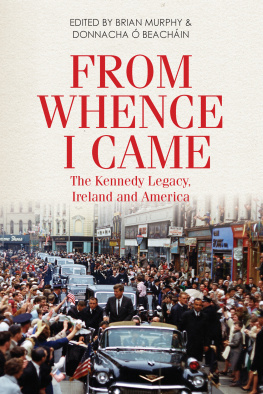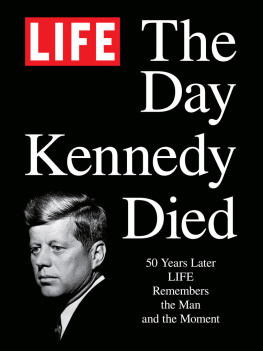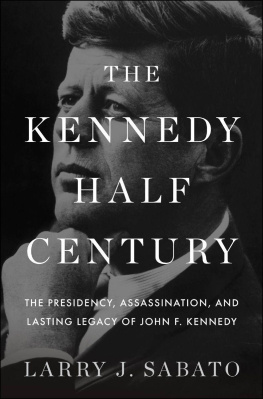Who Was
John F.
Kennedy?
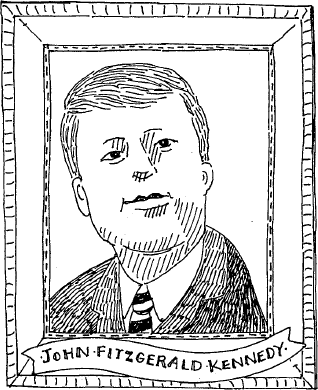
Who Was
John F.
Kennedy?
By Yona Zeldis McDonough
Illustrated by Jill Weber
Grosset & Dunlap New York
To my children, James and Katherine
McDonoughY.Z.M.
For Charlotte with loveJ.W.
The scanning, uploading, and distribution of this book via the Internet or via any other means without the permission of the publisher is illegal and punishable by law. Please purchase only electronic editions and do not participate in or encourage electronic piracy of copyrighted materials. Your support of the authors rights is appreciated.
Text copyright 2005 by Yona Zeldis McDonough. Illustrations copyright 2005 by Jill Weber. Cover illustration 2005 by Nancy Harrison. All rights reserved. Published by Grosset & Dunlap, a division of Penguin Young Readers Group, 345 Hudson Street, New York, New York 10014. GROSSET & DUNLAP is a trademark of Penguin Group (USA) Inc. Printed in the U.S.A.
Library of Congress Cataloging-in-Publication Data
McDonough, Yona Zeldis.
Who was John F. Kennedy? / by Yona Zeldis McDonough ; illustrated by Jill Weber.
p. cm. (Who was?)
Includes bibliographical references.
1. Kennedy, John F. (John Fitzgerald), 19171963Juvenile literature. 2. PresidentsUnited StatesBiographyJuvenile literature. I. Weber, Jill. II. Title. III. Series.
E842.Z9M39 2005
973.922092dc22
2004012225
ISBN: 978-1-101-63994-8 20 19 18 17 16 15 14

Who Was John F. Kennedy?

The small boat sped quickly along in the dark. It was a hot night in August. The thirteen men onboard were quiet and tense. Their mission was a scary one: They were looking for Japanese warships in the Pacific Ocean.
Suddenly, there was an explosion.

The small boat was ripped in half by a Japanese destroyer returning to its base. Two of the crew were killed instantly. The other eleven men clung to pieces of the boat until morning. Then the wreckage began to sink. The captain decided they all must swim to the safety of a nearby island. The men didnt think they could make it.
Will we ever get out of this? asked one.
It can be done, replied the captain. Well do it.
One of the men was burned so badly that he could not swim. He told the captain to save himself and the other men. But the captain would not leave the wounded man. He swam for five long hours with the burned man on his back. When they reached the island, the captain discovered two natives and a canoe.
He also discovered a coconut shell on which he carved these words:

NATIVE KNOWS POSIT
HE CAN PILOT 11 ALIVE
NEED SMALL BOAT KENNEDY

He gave the shell with the message to the islanders who went by canoe to another island nearly forty miles away. Six days after the patrol boat was destroyed, the brave and quick-thinking captain and his crew were rescued.
The captains name was John Fitzgerald Kennedy.


Chapter 1
Little Boy, Big Family

On May 29, 1917, a baby boy was born to Joseph P. Kennedy, a wealthy, Irish-American businessman, and his wife Rose. They named him John Fitzgerald Kennedy, in honor of Roses fatherJohn F. Fitzgerald.


Honey Fitz as he was called, had been a popular politician and a former mayor of Boston. When his daughter Rose began dating the young Kennedy boy, Honey Fitz was not so sure he approved. But the couple kept seeing each other and, eventually, Honey Fitz was won over by Joes hardworking and ambitious nature.
IRISH IMMIGRATION TO THE UNITED STATES
IN THE 1840S AND 1850S, MORE THAN ONE MILLION IRISH IMMIGRANTS SAILED TO AMERICA. BACK IN IRELAND, THE POTATO CROP HAD FAILED. WITHOUT THEIR STAPLE FOOD, AT LEAST ONE MILLION PEOPLE DIED OF STARVATION AND DISEASE. THE IMMIGRANTS WHO CAME HERE WERE CRAMMED INTO CROWDED, DIRTY SHIPS. NEARLY 20 PERCENT OF THEM DIED BEFORE THEY ARRIVED. THE ONES WHO DID WERE CALLED THE FAMINE IRISH. LIKE MANY NEW IMMIGRANT GROUPS, THEY FACED DISCRIMINATION AND HATRED. THEY COULD NOT EASILY FIND JOBS OR PLACES TO LIVE. SIGNS WITH THE WORDS IRISH NEED NOT APPLY WERE COMMON. THEY TOOK THE ONLY WORK THEY COULD GET: LAYING RAILROAD TRACKS, SHOVELING COAL, DIGGING CANALS, AND CLEARING SWAMPS.

Both the Kennedys and the Fitzgeralds were descended from Irish immigrants. The immigrants had come to Boston, Massachusetts, to escape the terrible potato famine of the 1840s. In the United States, both families had done well.

Nicknamed Jack, John was the second of Rose and Joseph Kennedys nine children. They lived in a comfortable clapboard house in Brookline, a town just outside Boston.
THE OTHER KENNEDY KIDS
JOSEPH PATRICK KENNEDY JR. WAS JOSEPH AND ROSE KENNEDYS FIRST SON, BORN IN 1915. JOHN FITZGERALD, KNOWN AS JACK, WAS BORN IN 1917. ROSEMARY (WHO WAS RETARDED) WAS BORN IN 1918. KATHLEEN, KNOWN AS KICK, WAS BORN IN 1920. EUNICE CAME NEXT, IN 1921. PATRICIA WAS BORN IN 1924. ROBERT, KNOWN AS BOBBY, CAME ALONG IN 1925. JEAN ANN WAS BORN IN 1928. THE NINTH AND LAST KENNEDY BABY, EDWARD, KNOWN AS TEDDY, WAS BORN IN 1932.


When Jack was two-and-a-half years old, he got scarlet fever, a deadly illness. It was so contagious that Jack had to be separated from his mother and baby sister, Kathleen. Jack missed his mother a lot. To take his mind off her, his Irish nanny, Kico Conby, told him wonderful stories about leprechauns and fairies. Usually, Jack loved her stories. But he was so sick, he could hardly listen. Instead, he clutched his favorite teddy bear tightly and drifted in and out of sleep.

